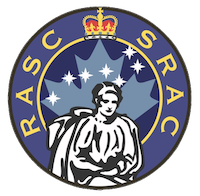Named in honor of Grote Reber (b. 1911, d. 2002), pioneer radioastronomer. He received the B.S. degree from the Illinois Institute of Technology, Chicago, in 1933. In 1962, he received an honorary Doctor of Science degree from The Ohio State University, Columbus.
A radio engineer by profession, he became intrigued by Jansky's 1932 detection of radio waves of extraterrestrial origin. From a series of homemade radio receivers and a 9.4-m parabolic dish antenna in his backyard in Wheaton, Illinois, Reber obtained the first detailed quantitative maps of the radio sky and published these in a series of papers during the 1940s. In 1940, he won his first professional publication, in the Astrophysical Journal, but Reber refused a research appointment from Yerkes. He turned his attention to making a radiofrequency sky map, which he completed in 1941 and extended in 1943. He published a considerable body of work during this period, and was the initiator of the "explosion" of radio astronomy in the immediate post-Second World War era. His stunning results gradually opened the consciousness of others to this very powerful method of observing the universe.
During this time he uncovered a mystery that was not explained until the 1950s. The standard theory of radio emissions from space was that they were due to black-body radiation, light (of which radio is a non-visible form) that is given off by all hot bodies. Using this theory one would expect that there would be considerably more high-energy light than low-energy, due to the presence of stars and other hot bodies. However Reber demonstrated that the reverse was true, and that there was a considerable amount of low-energy radio signal. It was not until the 1950s that synchrotron radiation was offered as an explanation for these measurements.
Reber sold his telescope to the National Bureau of Standards, and it was erected on a turntable at their field station in Sterling, Virginia. Eventually the telescope made its way to NRAO in Green Bank, West Virginia, and Reber supervised its reconstruction at that site. Reber also helped with a reconstruction of Jansky's original telescope.
Starting in 1951, he received generous support from the Research Corporation in New York, and moved to Hawaii. In the 1950s, he wanted to return to active studies but much of the field was already filled with very large and expensive instruments. Instead he turned to a field that was being largely ignored, that of medium frequency (hectometre) radio signals in the 0.5—3 MHz range, around the AM broadcast bands. However, signals with frequencies below 30 MHz are reflected by an ionized layer in the Earth's atmosphere called the ionosphere. In 1954, Reber moved to Tasmania, a triangular island off the southern coast of Australia, where he worked with Bill Ellis at the University of Tasmania. There, on very cold, long, winter nights the ionosphere would, after many hours shielded from the sun's radiation by the bulk of the Earth, 'quieten' and de-ionize, allowing the longer radio waves into his antenna array. Tasmania also offered low levels of man-made radio noise, which permitted reception of the faint signals from outer space.
In 1977 Mr. Reber presented a paper at the general assembly of the Royal Astronomical Society of Canada in Toronto, titled 'The Endless, Boundless, Stable Universe' concerning his dissent from the Big Bang theory. In 1981 Mr. Reber made a (for years afterwards) anonymous donation of $30,000 to the RASC to help defray the costs of transportation for delegates to general assemblies.
Mr. Reber was elected an honorary member of the RASC on 1988-01-30.
His ashes are located at Bothwell Cemetery in Tasmania and at many major radio observatories around the world, including the Dominion Astrophysical Observatory in British Columbia.
6886 Grote (1942 CG) is a main-belt asteroid discovered on February 11, 1942 by L. Oterma at Turku. Name suggested and citation prepared by G. C. L. Aikman.
Surname:
Reber
Title/Given Name:
Mr. Grote
Nation(s):
USA/Australia
Start:
1988
End:
2002

